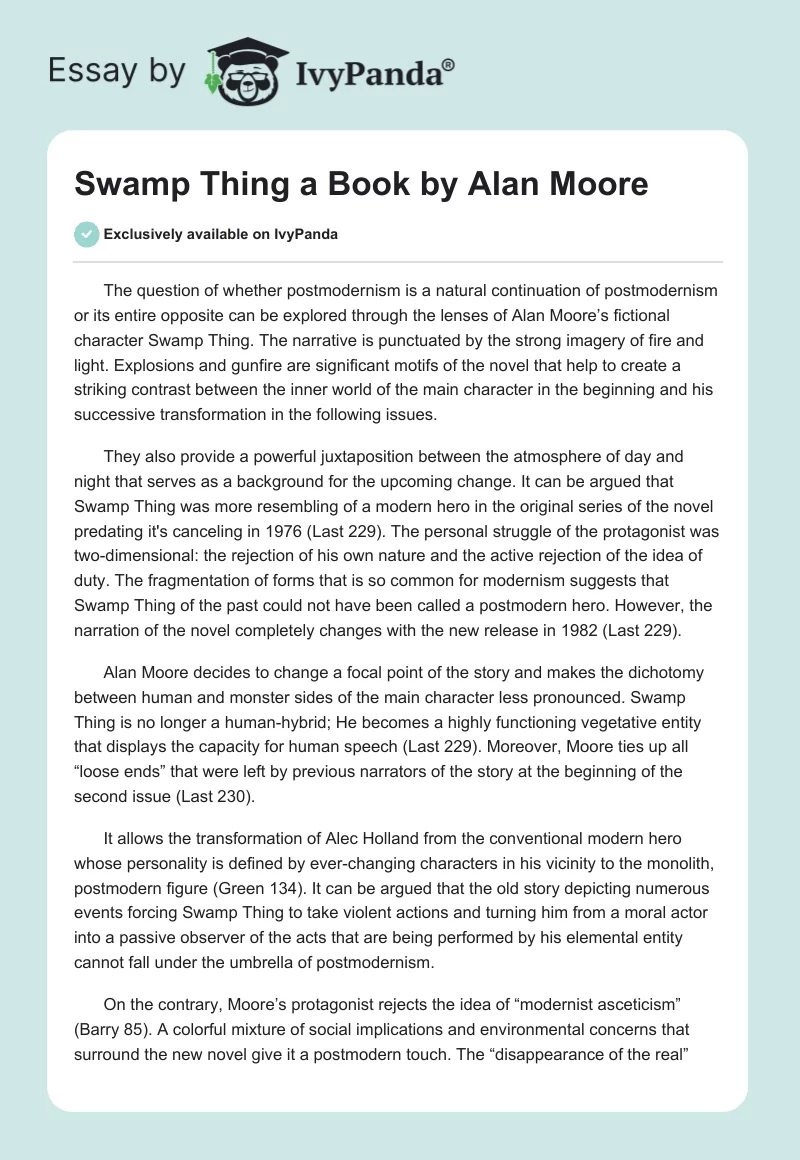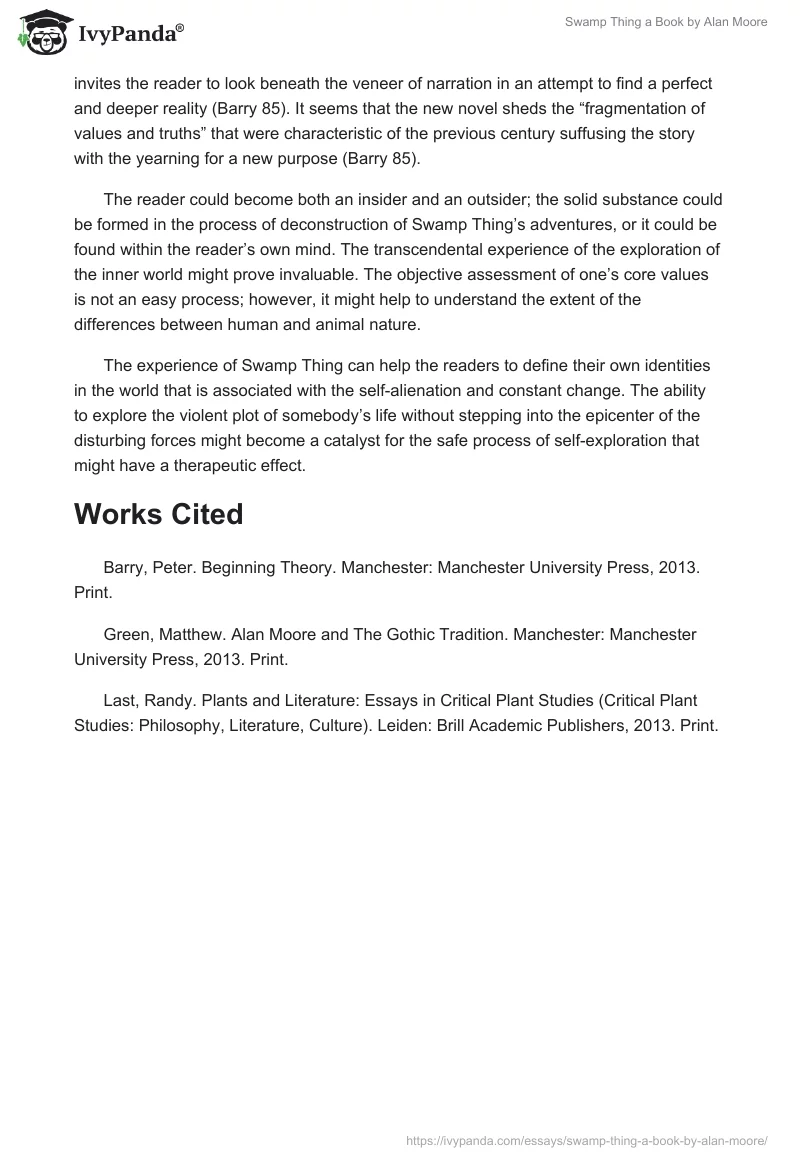The question of whether postmodernism is a natural continuation of postmodernism or its entire opposite can be explored through the lenses of Alan Moore’s fictional character Swamp Thing. The narrative is punctuated by the strong imagery of fire and light. Explosions and gunfire are significant motifs of the novel that help to create a striking contrast between the inner world of the main character in the beginning and his successive transformation in the following issues.
They also provide a powerful juxtaposition between the atmosphere of day and night that serves as a background for the upcoming change. It can be argued that Swamp Thing was more resembling of a modern hero in the original series of the novel predating it’s canceling in 1976 (Last 229). The personal struggle of the protagonist was two-dimensional: the rejection of his own nature and the active rejection of the idea of duty. The fragmentation of forms that is so common for modernism suggests that Swamp Thing of the past could not have been called a postmodern hero. However, the narration of the novel completely changes with the new release in 1982 (Last 229).
Alan Moore decides to change a focal point of the story and makes the dichotomy between human and monster sides of the main character less pronounced. Swamp Thing is no longer a human-hybrid; He becomes a highly functioning vegetative entity that displays the capacity for human speech (Last 229). Moreover, Moore ties up all “loose ends” that were left by previous narrators of the story at the beginning of the second issue (Last 230).
It allows the transformation of Alec Holland from the conventional modern hero whose personality is defined by ever-changing characters in his vicinity to the monolith, postmodern figure (Green 134). It can be argued that the old story depicting numerous events forcing Swamp Thing to take violent actions and turning him from a moral actor into a passive observer of the acts that are being performed by his elemental entity cannot fall under the umbrella of postmodernism.
On the contrary, Moore’s protagonist rejects the idea of “modernist asceticism” (Barry 85). A colorful mixture of social implications and environmental concerns that surround the new novel give it a postmodern touch. The “disappearance of the real” invites the reader to look beneath the veneer of narration in an attempt to find a perfect and deeper reality (Barry 85). It seems that the new novel sheds the “fragmentation of values and truths” that were characteristic of the previous century suffusing the story with the yearning for a new purpose (Barry 85).
The reader could become both an insider and an outsider; the solid substance could be formed in the process of deconstruction of Swamp Thing’s adventures, or it could be found within the reader’s own mind. The transcendental experience of the exploration of the inner world might prove invaluable. The objective assessment of one’s core values is not an easy process; however, it might help to understand the extent of the differences between human and animal nature.
The experience of Swamp Thing can help the readers to define their own identities in the world that is associated with the self-alienation and constant change. The ability to explore the violent plot of somebody’s life without stepping into the epicenter of the disturbing forces might become a catalyst for the safe process of self-exploration that might have a therapeutic effect.
Works Cited
Barry, Peter. Beginning Theory. Manchester: Manchester University Press, 2013. Print.
Green, Matthew. Alan Moore and The Gothic Tradition. Manchester: Manchester University Press, 2013. Print.
Last, Randy. Plants and Literature: Essays in Critical Plant Studies (Critical Plant Studies: Philosophy, Literature, Culture). Leiden: Brill Academic Publishers, 2013. Print.


